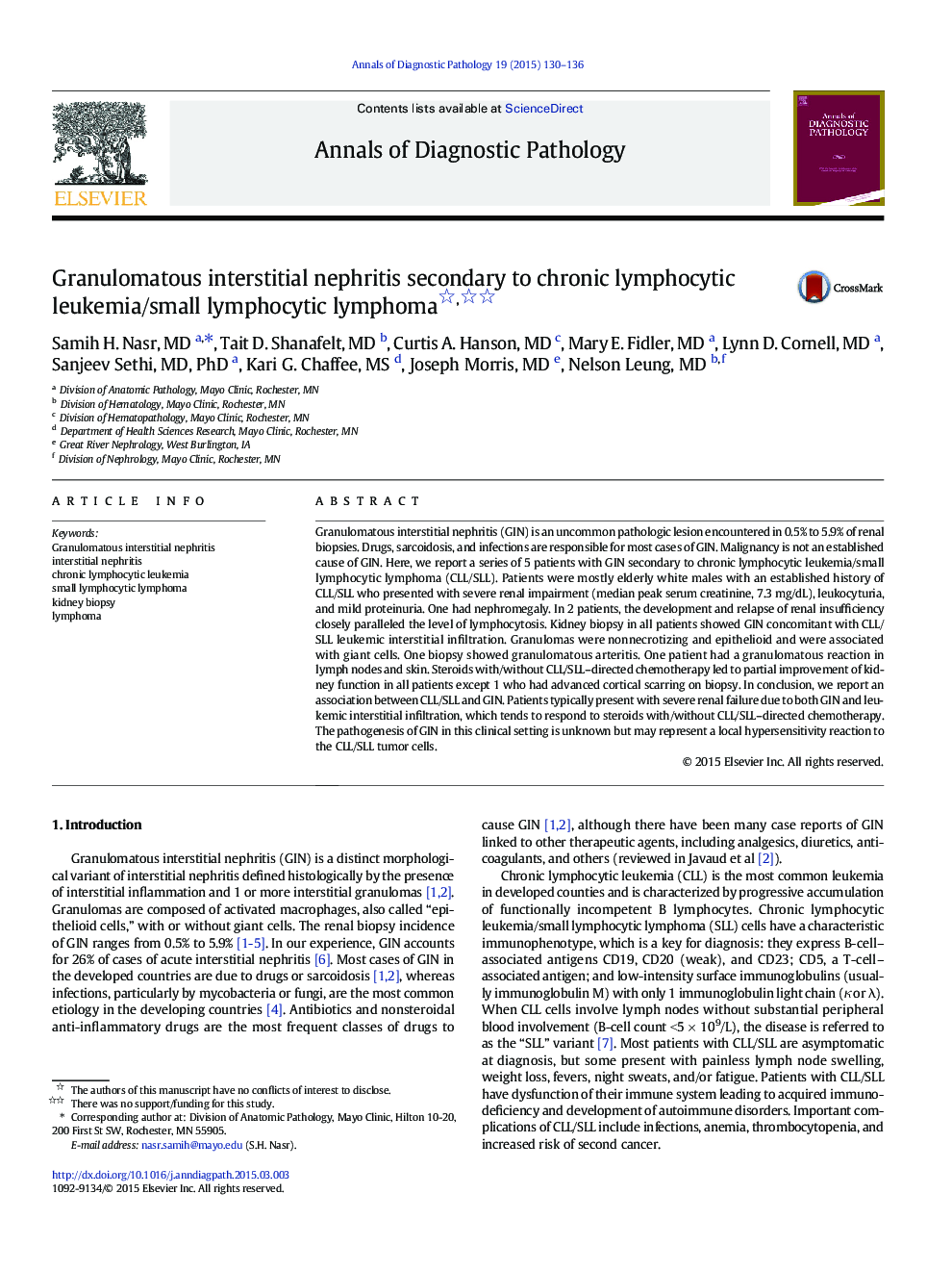| Article ID | Journal | Published Year | Pages | File Type |
|---|---|---|---|---|
| 4129794 | Annals of Diagnostic Pathology | 2015 | 7 Pages |
Granulomatous interstitial nephritis (GIN) is an uncommon pathologic lesion encountered in 0.5% to 5.9% of renal biopsies. Drugs, sarcoidosis, and infections are responsible for most cases of GIN. Malignancy is not an established cause of GIN. Here, we report a series of 5 patients with GIN secondary to chronic lymphocytic leukemia/small lymphocytic lymphoma (CLL/SLL). Patients were mostly elderly white males with an established history of CLL/SLL who presented with severe renal impairment (median peak serum creatinine, 7.3 mg/dL), leukocyturia, and mild proteinuria. One had nephromegaly. In 2 patients, the development and relapse of renal insufficiency closely paralleled the level of lymphocytosis. Kidney biopsy in all patients showed GIN concomitant with CLL/SLL leukemic interstitial infiltration. Granulomas were nonnecrotizing and epithelioid and were associated with giant cells. One biopsy showed granulomatous arteritis. One patient had a granulomatous reaction in lymph nodes and skin. Steroids with/without CLL/SLL–directed chemotherapy led to partial improvement of kidney function in all patients except 1 who had advanced cortical scarring on biopsy. In conclusion, we report an association between CLL/SLL and GIN. Patients typically present with severe renal failure due to both GIN and leukemic interstitial infiltration, which tends to respond to steroids with/without CLL/SLL–directed chemotherapy. The pathogenesis of GIN in this clinical setting is unknown but may represent a local hypersensitivity reaction to the CLL/SLL tumor cells.
